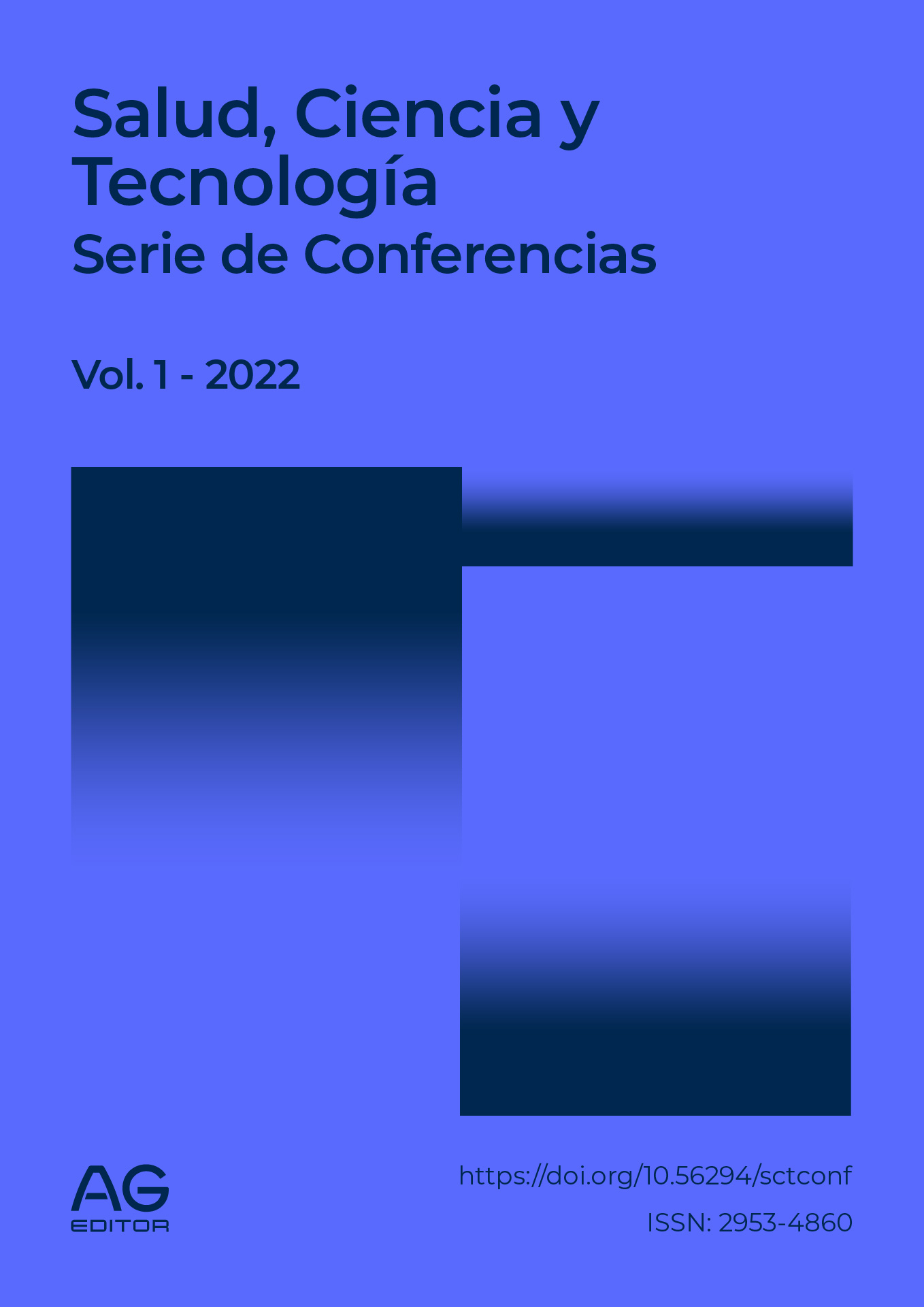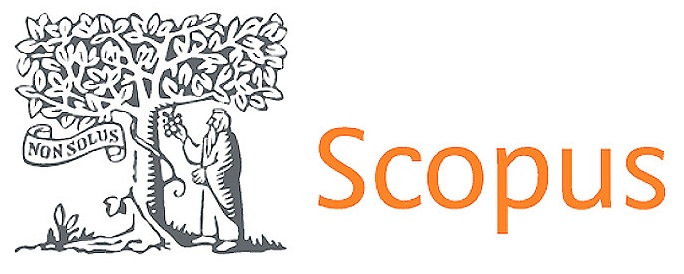Mediational role of hope in the relationship between family violence and suicide risk in Peruvian schoolchildren
DOI:
https://doi.org/10.56294/sctconf2022251Keywords:
Family Violence, Suicide Risk, Hope, School StudentsAbstract
The aim of this study was to analyze the connection between family violence and suicide risk in adolescents with indicators of hope. A sample of 243 participants was selected who met the inclusion criteria and had indicators of hope, aged 12 to 17 years (M=14,4, SD=1,35), 55,6 % female. Three scales validated in the Peruvian context were used: the Family Violence Scale (FVS), the Plutchik Suicide Risk Scale and the Herth Hope Scale. The results showed that hope played a partial and complementary mediational role, and the correlation revealed a positive and significant relationship (Rho=0,559, p<0,001) between the increase in violence and the increase in suicidal risk. This association was evident in physical violence (Rho=0,417, p<0,001), psychological violence (R=0,420, p<0,001) and sexual violence (Rho=0,494, p<0,001). Descriptive data indicate that a low level of physical violence (38,7 %), a high level of psychological violence (35,4 %) and a low level of sexual violence (61,7 %) prevailed. In addition, it was observed that all participants presented low levels of suicidal risk. It is concluded that family violence increases suicidal risk in adolescents, highlighting the importance of urgently addressing this problem.
References
1. Adler, A. (1968). Suicide. Journal of Individual Psychology, 14, 57-61.
2. Andreani, J. C. (2021a). Neurotomía Periférica Selectiva del Nervio mediano a nivel del brazo. Indicaciones y técnica quirúrgica. NeuroTarget, 15(3), Article 3. https://doi.org/10.47924/neurotarget20214 DOI: https://doi.org/10.47924/neurotarget20214
3. Andreani, J. C. (2021b). Relevancia anátomo–funcional del núcleo amigdalino. Su fisiología, fisiopatología y orientaciones terapéuticas. NeuroTarget, 15(3), Article 3. https://doi.org/10.47924/neurotarget20213 DOI: https://doi.org/10.47924/neurotarget20213
4. Auliaamafaza, A. I., Wahyuni, I. S., Erlangga, E. A., & Amirudin, A. (2022). Ethnography of Thruthuk as Identity of Cultural Arts in Semarang City – Indonesia. Espergesia, 9(1), Article 1. https://doi.org/10.18050/rev.espergesia.v9i2.2058 DOI: https://doi.org/10.18050/rev.espergesia.v9i2.2058
5. Bandura, A. (1987). Teoría del aprendizaje social. Espasa-Calpe
6. Barrios, V., Cesan, M., Cieplicki, N., & Rosales, M. G. (2021). Una revisión sobre la eficacia del tratamiento cognitivo conductual para el abordaje de la comorbilidad de dolor crónico y el consumo problemático de sustancias. NeuroTarget, 15(3), Article 3. https://doi.org/10.47924/neurotarget20217 DOI: https://doi.org/10.47924/neurotarget20217
7. Bronfenbrenner, U. (1979). The ecology of human development: Experiments by nature and design. Cambridge: Harvard University Press DOI: https://doi.org/10.4159/9780674028845
8. Cano, P., Gutiérrez, C., & Nizama, M. (2019). Violencia e ideación suicida en adolescentes escolares en una ciudad de la Amazonía Peruana. Revista Perú Medicina Salud Publica, 26(2), 175-181. http://www.scielo.org.pe/pdf/rins/v26n2/a07v26n2.pdf
9. Carpio, J. A. C. D. (2022). Actitudes sociales de limeños ante el confinamiento por la pandemia de COVID-19 en 2020. UCV Hacer, 11(3), Article 3. https://doi.org/10.18050/RevUCVHACER.v11n3a3 DOI: https://doi.org/10.18050/RevUCVHACER.v11n3a3
10. Caycedo, A., Arenas, M., Benítez, M., Cavanzo, P., Leal, G., & Guzmán, Y. (2021). Violencia familiar relacionada con el intento de suicidio en una población adolescente en Bogotá-2019. Revista Persona y Bioética, 14(2), 205-213. https://www.redalyc.org/articulo.oa?id=83216977008 DOI: https://doi.org/10.5294/pebi.2010.14.2.8
11. Caycho, T., Castilla, H. y Ventura-León, J. (2016). Esperanza en adolescentes y jóvenes peruanos: diferencias según el sexo y la edad. Psychologia. Avances de la Disciplina, 10(2), 33-41. https://www.redalyc.org/journal/2972/297248896003/html/ DOI: https://doi.org/10.21500/19002386.2291
12. Chauca, J. (2019). Construcción de la Escala de violencia familiar (EVF) en estudiantes de secundaria de I.E.P San Martín de Porres. Lima, 2019. [Tesis de Titulación, Universidad César Vallejo]. https://repositorio.ucv.edu.pe/handle/20 500.12692/37395
13. Chavez, E. del M. P. (2022). Técnicas gráfico-plásticas en la primera infancia para estimular la coordinación óculo manual: Una alternativa pedagógica. UCV Hacer, 11(3), Article 3. https://doi.org/10.18050/RevUCVHACER.v11n3a5 DOI: https://doi.org/10.18050/RevUCVHACER.v11n3a5
14. Chero, J. C. B., & Ugaz, W. A. C. (2022). Valoración Económica de los servicios Ecosistémicos Área de Conservación Regional Moyán Palacio, región Lambayeque. UCV Hacer, 11(3), Article 3. https://doi.org/10.18050/RevUCVHACER.v11n3a4 DOI: https://doi.org/10.18050/RevUCVHACER.v11n3a4
15. Cohen, J. (1992). A power primer. Psychological Bulletin, 112(1), 155-159. https://doi.org/10.1037/0033-2909.112.1.155 DOI: https://doi.org/10.1037//0033-2909.112.1.155
16. Collori, M. A. G., Vera, O. J. S., Periche, J. T. R., Gonzáles, J. del R. G., & Garcia, A. C. V. (2022). Sistema de osmosis inversa en remoción de arsénico de agua subterránea en Pacora. UCV Hacer, 11(4), Article 4. https://revistas.ucv.edu.pe/index.php/ucv-hacer/article/view/2331 DOI: https://doi.org/10.18050/RevUCVHACER.v11n4a1
17. Derito, M. N. C. (2021). Homenaje al DR. Juan Carlos Goldar, Gran Neuropsiquiatra Argentino. NeuroTarget, 15(3), Article 3. https://doi.org/10.47924/neurotarget20212 DOI: https://doi.org/10.47924/neurotarget20212
18. Durkheim, E. (1982). El suicidio. Akal Universitaria.
19. Espinoza, F., Zepeda, V., Bautista, V., Hernández, C., Newton, O., & Plasencia, G. (2019). Violencia doméstica y riesgo de conducta suicida en escolares adolescentes. Revista Salud Pública de México, 52(3), 213-219. scielo.org.mx/pdf/spm/v52n3/05.pdf DOI: https://doi.org/10.1590/S0036-36342010000300005
20. Falgares, G., Marchetti, D., Manna, G., Musso, P., Oasi, O., Kopala-Sibley, D. C., De Santis, S., & Verrocchio, M. C. (2018). Childhood Maltreatment, Pathological Personality Dimensions, and Suicide Risk in Young Adults. Frontiers in psychology, 9, 806. https://doi.org/10.3389/fpsyg.2018.00806 DOI: https://doi.org/10.3389/fpsyg.2018.00806
21. Garcés-Ginarte MJ, Pérez-Ortiz L, Vitón-Castillo AA. Scientific production on crania-encephalic trauma in Cuban student journals. January 2015-June 2021. Revista Médica Electrónica, 2023; 45(1). DOI: https://doi.org/10.56294/sctconf202211
22. Garza, R., Castro, L., & Calderón, S. (2019). Estructura familiar, ideación suicida y desesperanza en el adolescente. Revista Psicología desde el Caribe, 36(2), 228-247. https://rcientificas.uninorte.edu.co/index.php/psicologia/article/view/10845/214421444260 DOI: https://doi.org/10.14482/psdc.36.2.616.8
23. Ghasemi, A., & Zahediasl, S. (2012). Normality tests for statistical analysis: A guide for non-statisticians. International Journal of Endocrinology and Metabolism, 10(2), 486-489. https://www.ncbi.nlm.nih.gov/pmc/articles/PMC3693611/ DOI: https://doi.org/10.5812/ijem.3505
24. Guzmán, A. (2019). Factores familiares que intervienen en el riesgo suicida en adolescentes. Revista Vínculos. Sociología, análisis y opinión, 1(15), 201- 221. http://www.publicaciones.cucsh.udg.mx/pperiod/vinculos/pdfs/vinculos15/F ACTORES_FAMILIARES.pdf
25. Heidgger, M. (1990). Carta sobre el Humanismo. Buenos Aires, Argentina, Sur. https://www.ucm.es/data/cont/docs/241-2015-06-16-Carta%20sobre%20el%20humanismo.pdf
26. Hernández-Sampieri, R. y Mendoza, C (2018). Metodología de la investigación. Las rutas cuantitativa, cualitativa y mixta. Mc Graw Hill Education.
27. Hinkelammert, F. (2007). Humanismo y violencia. Revista POLIS, 18(1), 18-27. https://doi.org/10.7326/0003-4819-151-4-200908180-00135 DOI: https://doi.org/10.7326/0003-4819-151-4-200908180-00135
28. Instituto Nacional de Estadística e Informática (2019). Cajamarca: Indicadores de violencia familiar y sexual 2012 - 2019. Cajamarca: INEI. https://www.inei.gob.pe/media/MenuRecursivo/publicaciones_digitales/Est/Lib1686/libro.pdf
29. Jung, C. (1959). The meaning of death. McGraw Hill Book Copan y, Inc., 1959.
30. Kim J. (2021). Development of Structural Model on Suicidal Ideation in Adolescents' Exposure to Violence. International journal of environmental research and public health, 18(6), 3215. https://doi.org/10.3390/ijerph18063215 DOI: https://doi.org/10.3390/ijerph18063215
31. Landa, M., Urtecho, O., & Aguilar, M. (2022) Factores psicológicos asociados al riesgo suicida en estudiantes universitarios de Honduras. Scielo, 40(1), 1- 17. DOI: https://doi.org/10.12804/revistas.urosario.edu.co/apl/a.8537
32. Mendoza, G. R. G., Reyes, V. M., Morales, A. G. S., Casana, P. F. D., & Bustillos, J. K. L. (2022). Factores condicionantes y efectividad del servicio público de agua potable en el Cantón Santa Lucía, Guayas-Ecuador. UCV Hacer, 11(3), Article 3. https://doi.org/10.18050/RevUCVHACER.v11n3a2 DOI: https://doi.org/10.18050/RevUCVHACER.v11n3a2
33. Ministerio de Salud. (2021). Minsa pone a disposición pautas para prevenir conductas suicidas. MINSA. https://www.gob.pe/institucion/minsa/noticias/605561-minsa-pone-a-disposicion-pautas-para-prevenir-conductas-suicidas
34. Mondragón, M. (2014). Uso de correlación de Spearman en un estudio de intervención en fisioterapia. Movimiento Científico, 8(1). https://doi.org/10.33881/2011-7191.mct.08111 DOI: https://doi.org/10.33881/2011-7191.mct.08111
35. Morales, M. (2015). Maltrato intrafamiliar relacionado al riesgo de suicidio en los adolescentes de 4to y 5to de secundaria de la I.E. Enrique Paillardelle Tacana 2014. [Tesis de Titulación, Universidad Nacional Jorge Basadre]. http://repositorio.unjbg.edu.pe/bitstream/handle/UNJBG/434/TG0294.pdf?sequence=1&isAllowed=y
36. My-Hanh, M., Thien-Vu, G., Thanh-Huan, N., Van-Son, H., & Vinh-Khuong, N. (2022). The trauma of Vietnamese children living in the incomplete families. Espergesia, 9(1), Article 1. https://doi.org/10.18050/rev.espergesia.v9i1.2062 DOI: https://doi.org/10.18050/rev.espergesia.v9i1.2062
37. Piedimonte, L. (2021). Relato de la V Jornada de Psicopatología y Neurociencias. NeuroTarget, 15(3), Article 3. https://doi.org/10.47924/neurotarget20218 DOI: https://doi.org/10.47924/neurotarget20218
38. Pimienta, R. (2000). Encuestas probabilísticas vs. no probabilísticas. Política y Cultura, (13), 263-276.
39. Plutchik, J. (1989). Escala de Riesgo Suicida de Plutchik. Estados Unidos.
40. Ramos, R. P. B., & Manalo, J. J. P. (2022). The ASEAN Way: Challenges, Issues, and Opportunities during the COVID-19 Pandemic. Espergesia, 9(1), Article 1. https://doi.org/10.18050/rev.espergesia.v9i1.2061 DOI: https://doi.org/10.18050/rev.espergesia.v9i1.2061
41. Rodríguez, J. C. M., & Jiménez, D. V. (2022). Determinants of didactics in the virtual educational communication of Higher Education, COVID-19 context. Espergesia, 9(1), Article 1. https://doi.org/10.18050/rev.espergesia.v9i1.2074 DOI: https://doi.org/10.18050/rev.espergesia.v9i1.2074
42. Shamsuddin, W. N. F. W., Anuardi, M. N. A. M., & Rozee, I. S. M. (2022). A preliminary study on the potential of Virtual Reality Therapy in reducing public speaking anxiety. Espergesia, 9(1), Article 1. https://doi.org/10.18050/rev.espergesia.v9i1.2087 DOI: https://doi.org/10.18050/rev.espergesia.v9i1.2087
43. Snyder, C. (Ed.). (2000). Handbook of hope: Theory, measures, and applications. San Diego, CA: Academic Press.
44. Suárez, Y., Restrepo, D., Caballero, C., & Palacio, J. (2018). Exposición a la Violencia y Riesgo Suicida en Escolares Colombianos. Revista Sociedad Chilena de Psicología Clínica, 6(2), 101-11. https://www.scielo.cl/pdf/terpsicol/v36n2/0718-4808-terpsicol-36-02- 00101.pdf DOI: https://doi.org/10.4067/S0718-48082018000200101
45. Tarrillo, J., & Tarillo, W. (2018). Factores de riesgos asociados a la tendencia de suicidio en estudiantes de la Universidad Nacional de Cajamarca - Jaén, 2018. [Tesis de Titulación, Universidad Nacional de Cajamarca]. https://repositorio.unc.edu.pe/bitstream/handle/20.500.14074/2108/T016_4 4609699_T.pdf?sequence=1&isAllowed=y
46. Velarde, R. (2015). Violencia de pareja e ideación suicida en mujeres de la Institución Educativa Adventista 28 de julio de la ciudad Tacna, 2015. [Tesis de Maestría, Universidad Peruana Unión]. https://repositorio.upeu.edu.pe/bitstream/handle/20.500.12840/216/Ruth_Te sis_maestria_2015.pdf?sequence=1&isAllowed=y
47. Vitón-Castillo AA, Lazo Herrera LA. ICT in Cuban medical education in times of COVID-19. Educacion Medica, 2021; 22:S27. https://doi.org/10.1016/j.edumed.2020.07.013 DOI: https://doi.org/10.1016/j.edumed.2020.07.013
48. Wood, R., Murch, B. y Betteridge, R. (2019). A comparison of population segmentation methods. Operations Research for Health Care, 22. https://doi.org/10.1016/j.orhc.2019.100192 DOI: https://doi.org/10.1016/j.orhc.2019.100192
Downloads
Published
Issue
Section
License
Copyright (c) 2022 Alessandra Cristina Nuñez Chávez, Fernando Joel Rosario Quiroz, Fernando Javier Mendoza Urbina, María Isabel Denegri Velarde, Elena Esther Yaya Castañeda, Marilyn Villanueva-Batallanos (Author)

This work is licensed under a Creative Commons Attribution 4.0 International License.
The article is distributed under the Creative Commons Attribution 4.0 License. Unless otherwise stated, associated published material is distributed under the same licence.



